We’re lucky enough to live in a region that usually gets frost flowers (hair ice) several times each winter. This winter was weird, though — too warm, and then too cold, and then too warm — so I was starting to wonder whether we would get any really good frost formations.
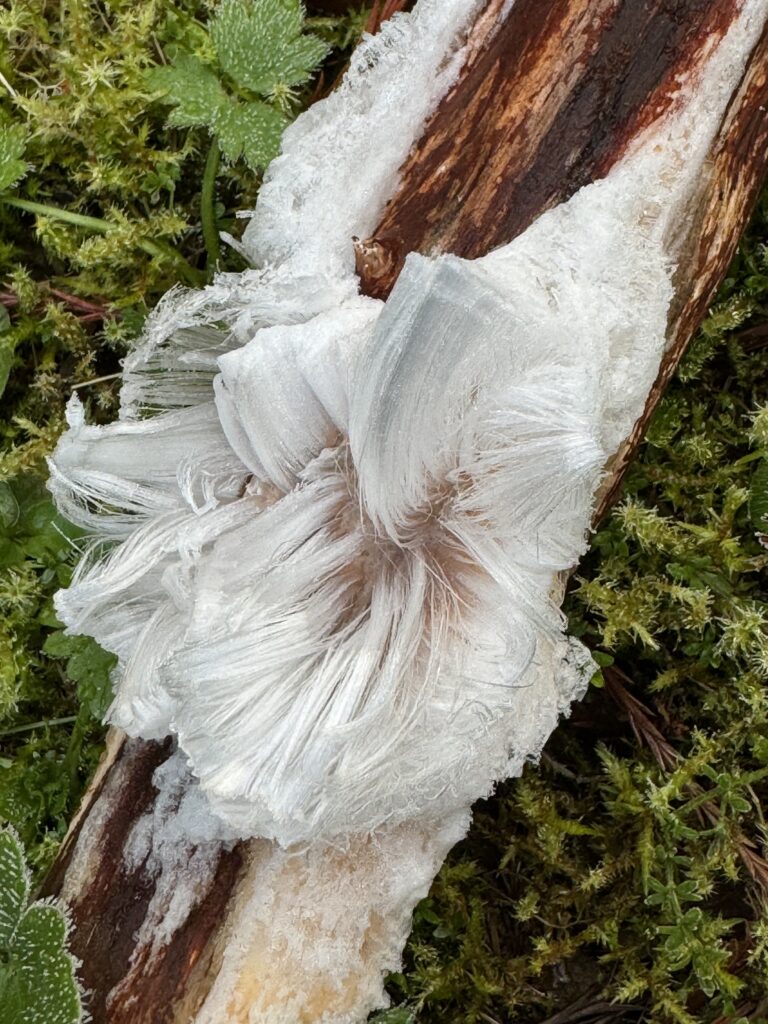
We got a few, early, back in November, but we hadn’t had any truly good blooms.
Finally, on the morning of March 6th, we got a very good bloom! It was clear, and hit around 28F, which is perfect for “growing” frost flowers/hair ice.
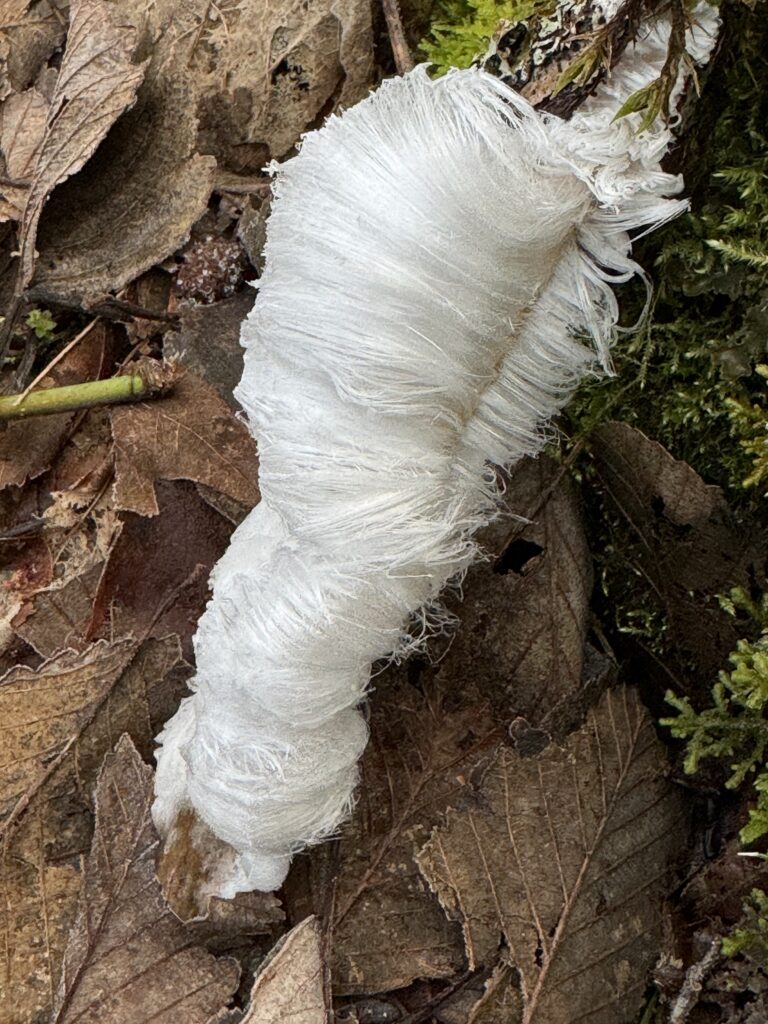
Please note that the general frost flower commentary below is taken from this post from a couple years ago. All the photos are new.
Frost flowers (hair ice) form when there are sodden sticks that dip below freezing overnight. Around here, the sweet spot is ~28-31 F. It needs to be cold enough to produce frost, but not so cold as to freeze the stick solid.
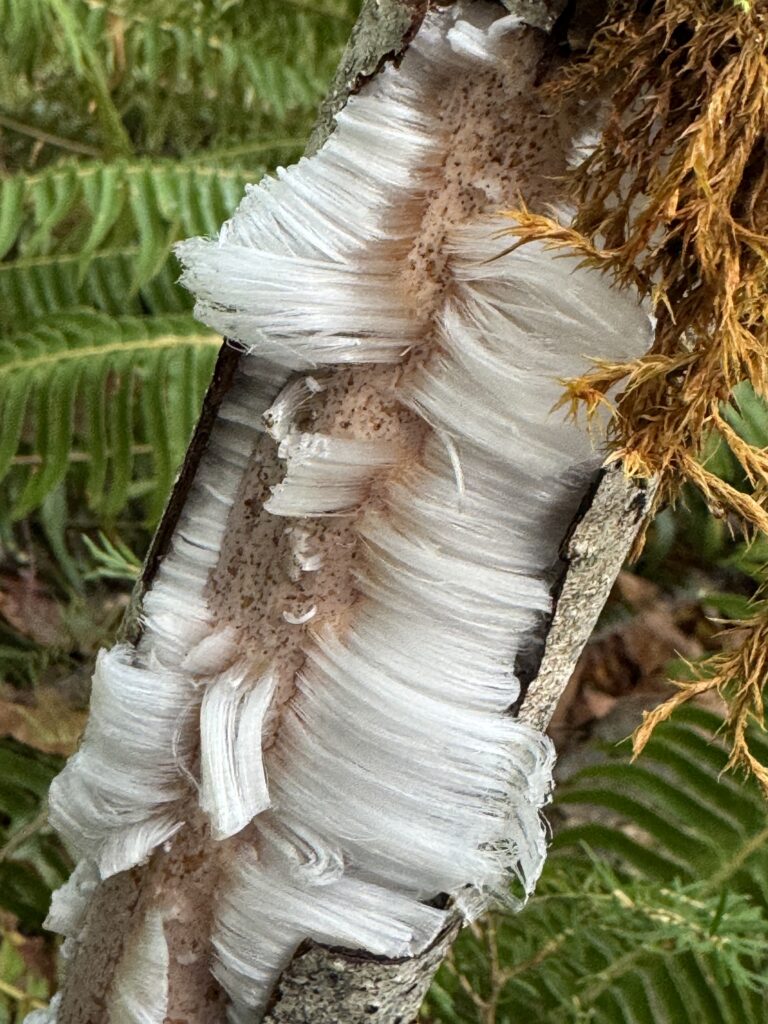
The ice forms on the surface of the stick, and is extruded as it freezes to form “hair” which can take beautiful forms that look like silvery locks or silvery flowers.
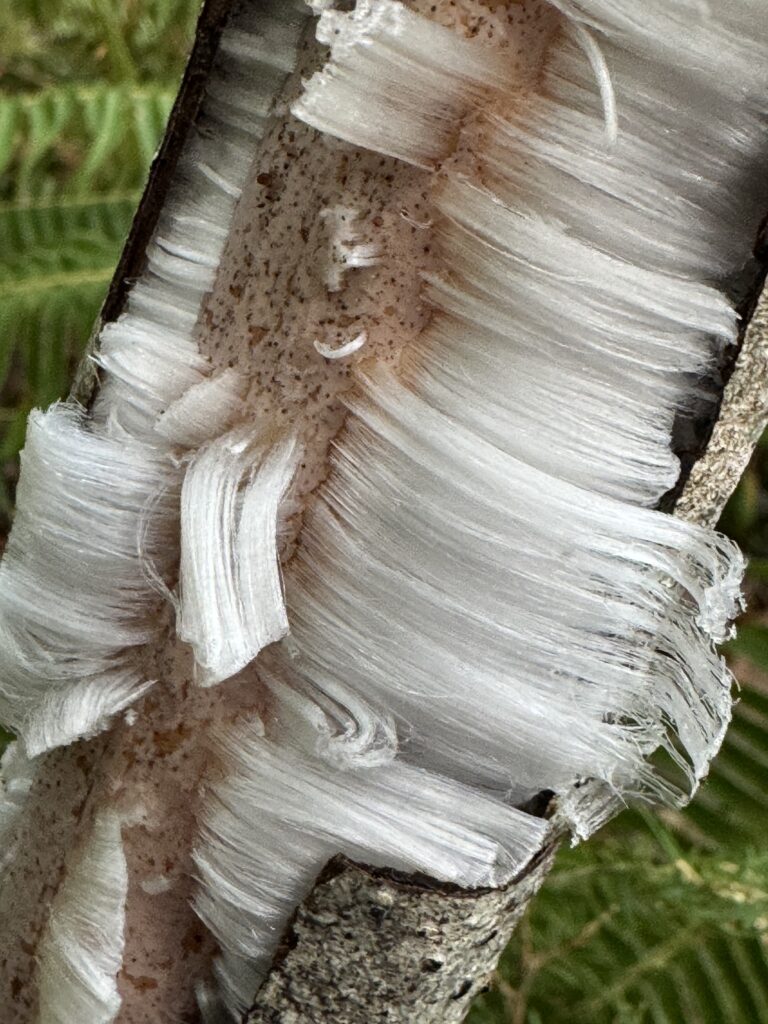
There is a fungal association with Exidiopsis effusa. Around here, there is also a clear preference for alder twigs and branches. I’m not sure whether that’s what the fungus prefers, or whether the wood somehow favors frost flower formation.
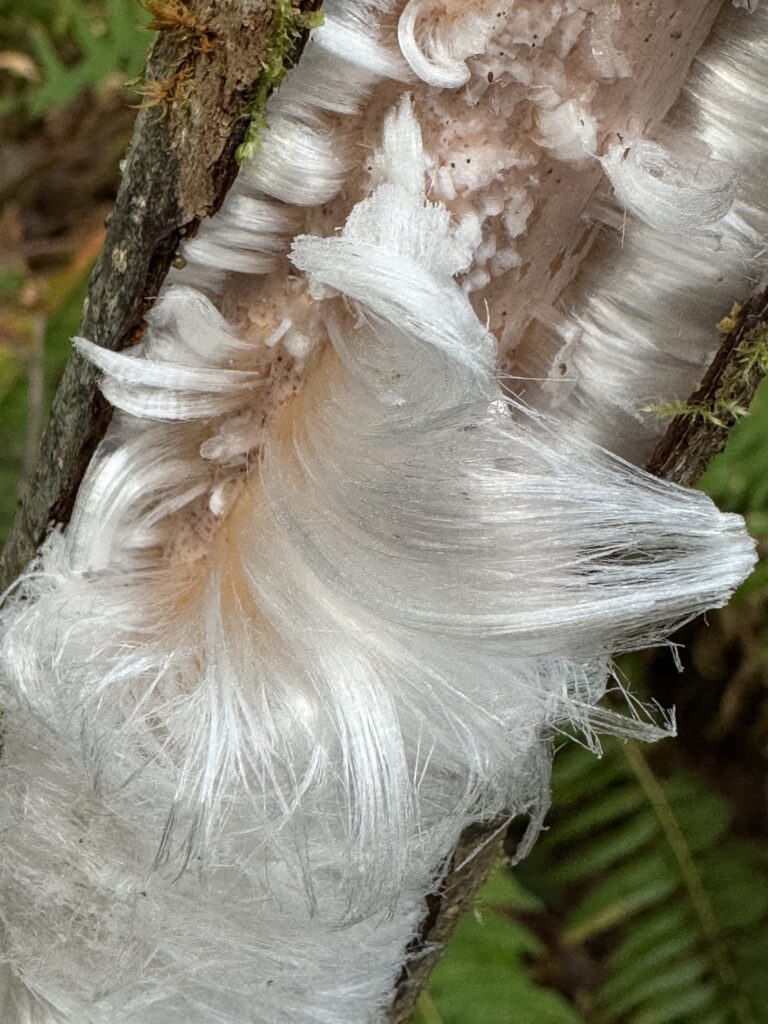
Frost flower and hair ice are two terms used semi-interchangeably. As far as I can tell, the distinction is mostly based on the type of formation. If it’s a burst formation (e.g. from the end of a stick), it’s a frost flower. If it looks like hair growing out of the middle of a stick, it’s hair ice. Even though most of what we get is probably more hair ice than frost flowers, I like the latter term better 🙂
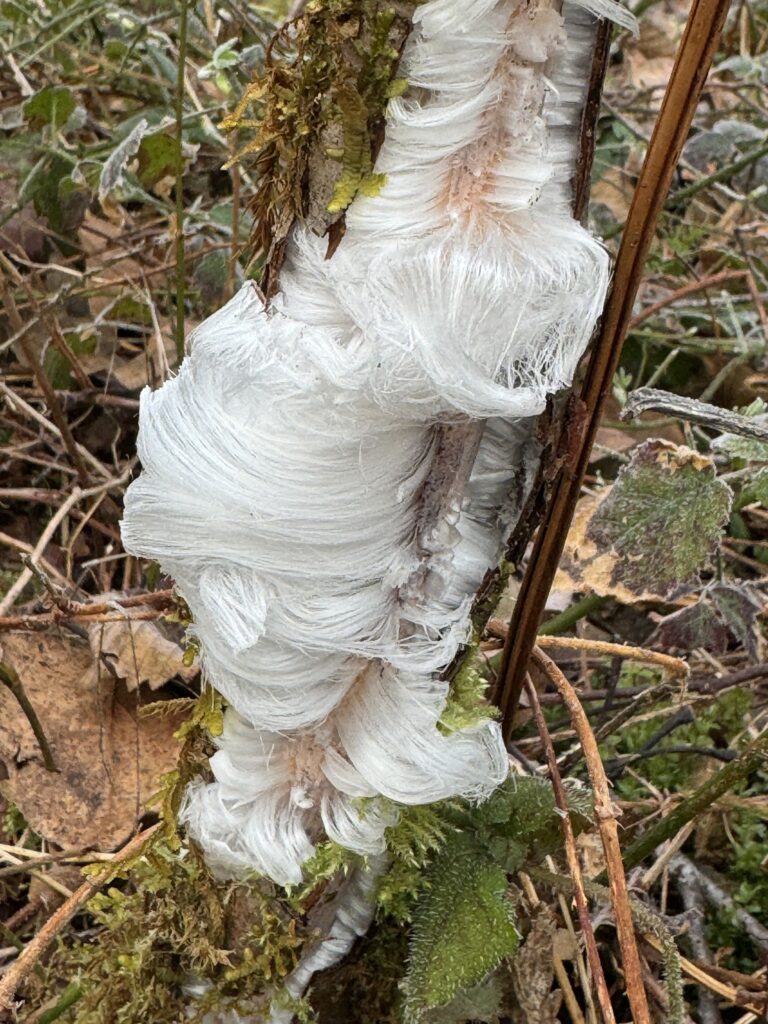
Frost flowers and hair ice are relatively rare worldwide. They require specific conditions to “grow”. In climates with cold winters, you might be lucky enough to see a few in the autumns.
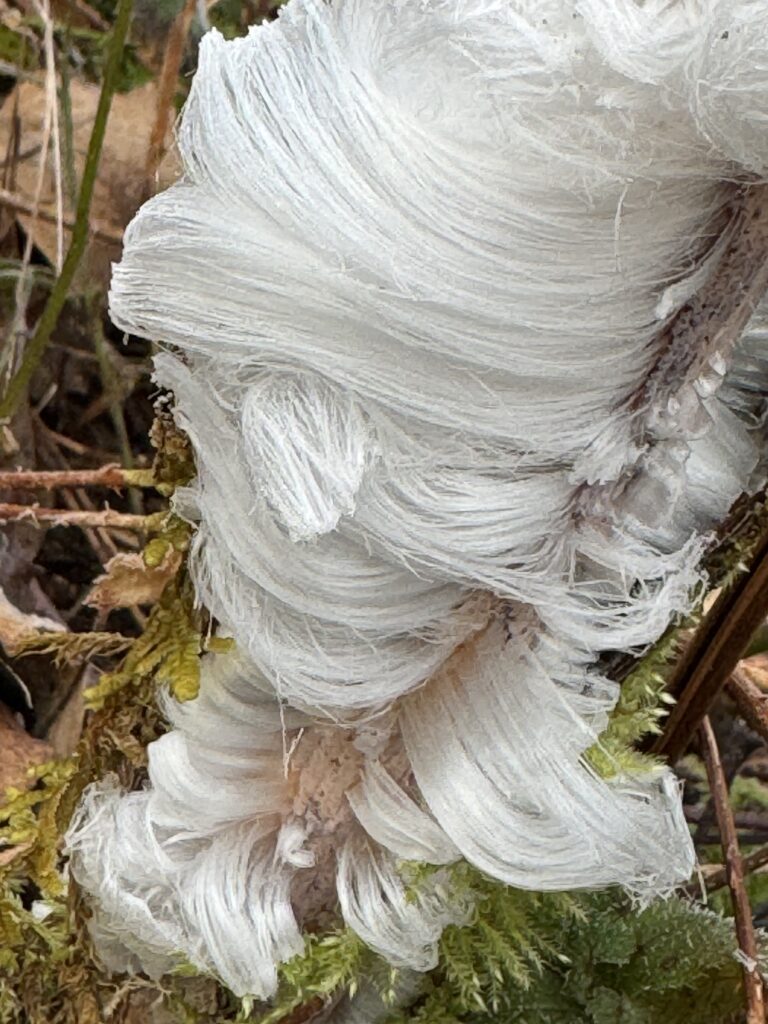
Here in the Puget Sound area, the winters are mild and tend to only dip below freezing occasionally. We also have an abundance of alders. That gives us the ideal conditions for hair ice and frost flowers.
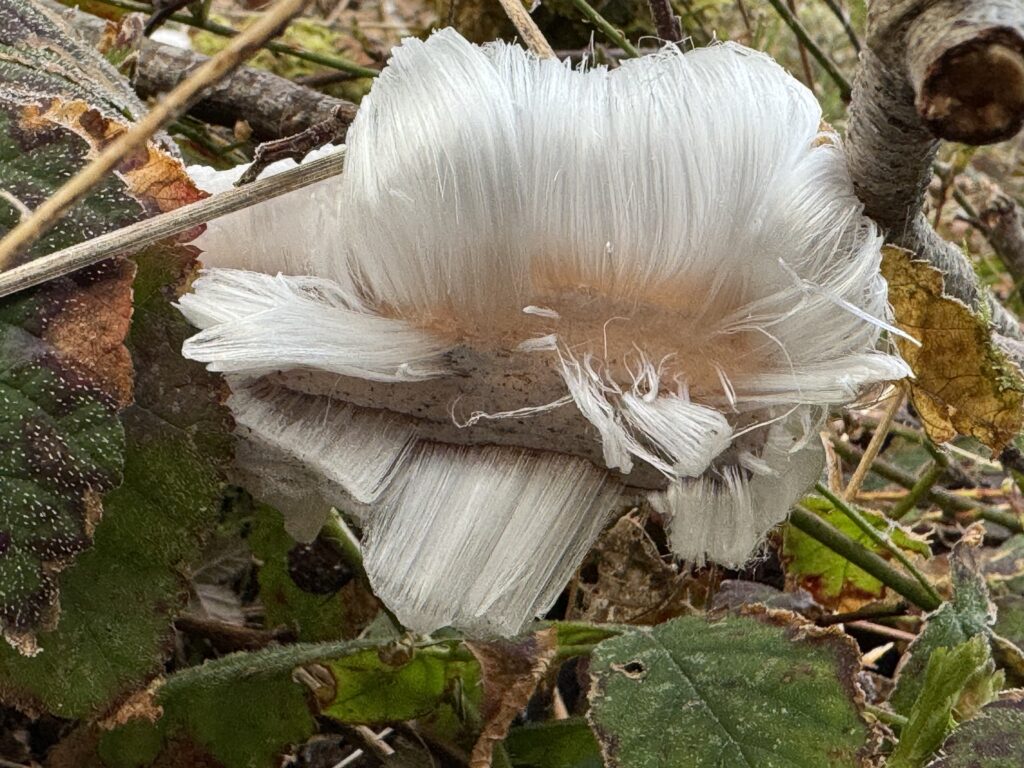
To see them, go out on a cold morning and check any local alder groves. They tend to be more common at the edges of alder groves, where the sticks are a bit more exposed… but that depends on the temperature range. On a very cold morning (25-28F) there may be such formations deeper in the woods.
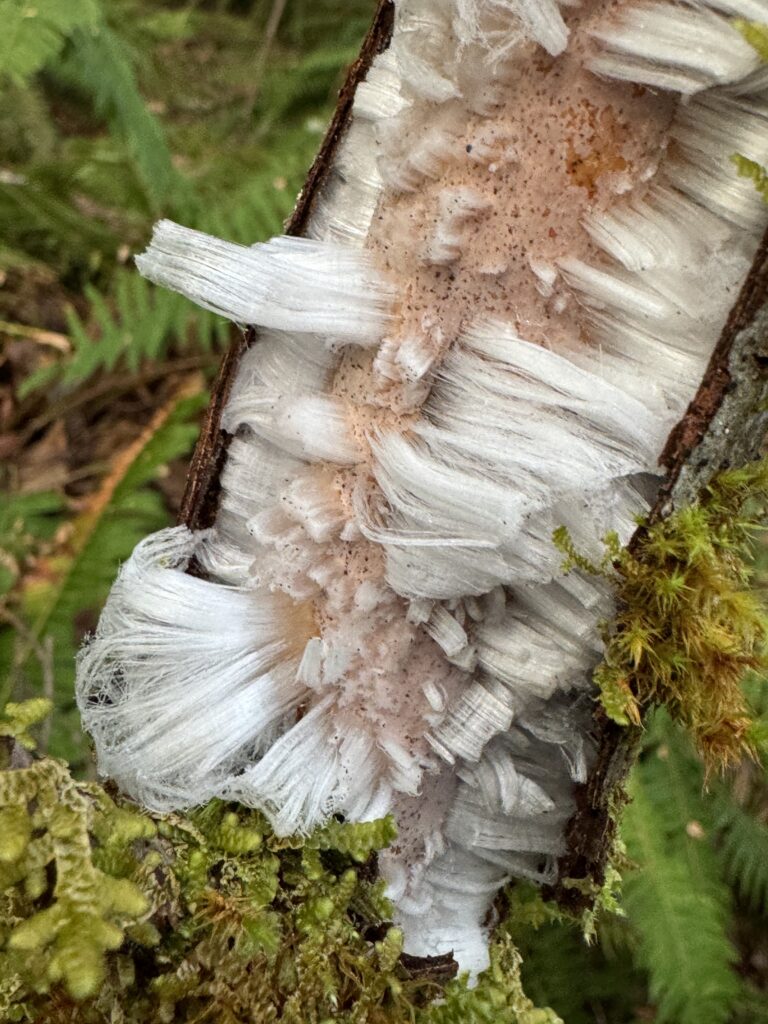
They are most common on mid-sized twigs and branches (~1/2-2″ diameter), but occasionally they grow on larger or smaller branches.

I didn’t realize that you have a blog! I will enjoy reading it!
Aww, thank you! It is very intermittent, as you can see, but I enjoy having a longer-term record 🙂